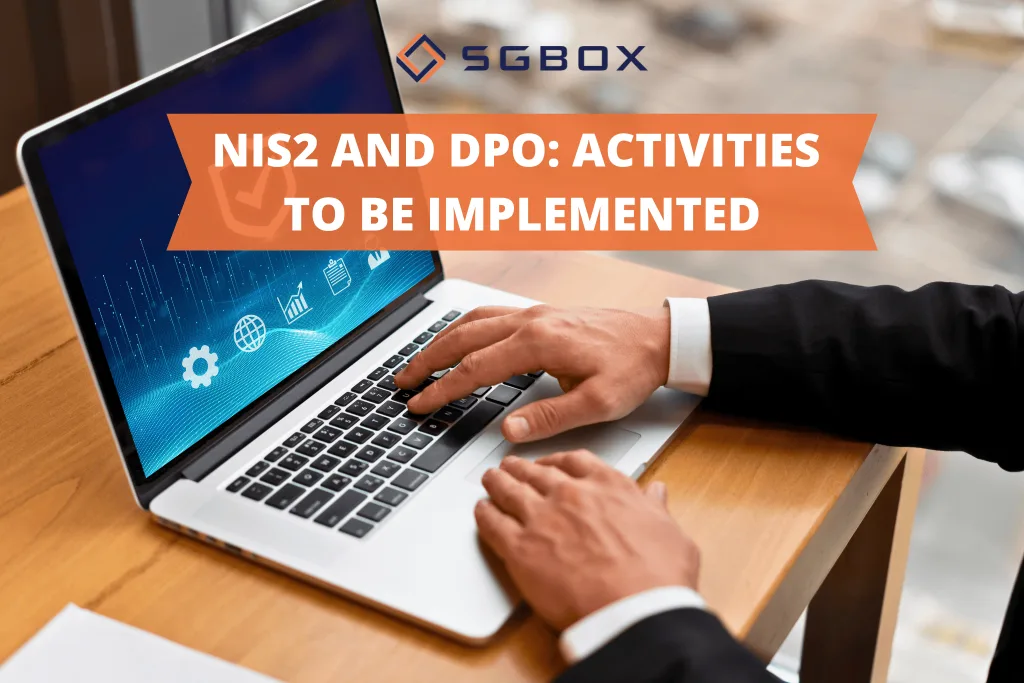Compliance with NIS2: essential tools for DPOs

The NIS2 Directive marks a turning point for cyber security in Europe, imposing higher standards on companies regarding network and information system security.
For Data Protection Officers (DPOs), adapting to these new regulatory requirements is not just an obligation but also an opportunity to strengthen corporate resilience and foster a widespread security culture.
In this article, we will explore the strategic actions that a DPO must implement to ensure compliance with NIS2, illustrating how the SGBox platform can provide the necessary tools to effectively support this process.
Understanding and analyzing the regulatory framework
The first step for a DPO is to gain a deep understanding of the requirements imposed by the NIS2 Directive.
This regulation introduces stricter measures for managing cyber security risks and requires stronger collaboration between the public and private sectors.
A DPO must:
- Analyze the gaps: conduct a detailed assessment of the company’s current security status, identifying gaps in relation to the directive’s standards and overlap with GDPR.
- Stay updated: keep track of regulatory developments and international best practices, ensuring that internal policies are always aligned with new European directives.
Developing an Integrated action plan
Once the regulatory framework is understood, the DPO must develop a detailed action plan that includes:
- Defining objectives: set clear and measurable security goals, such as adopting advanced monitoring systems and incident response procedures.
- Identifying necessary resources: determine the human, technological, and financial resources required to meet the set objectives.
- Implementing audit and control processes: schedule periodic audits to monitor the effectiveness of implemented measures and ensure continuous improvement.
Risk Assessment and Management
Risk assessment is a fundamental component of effective security management:
- Mapping risks: Identify all potential threats and vulnerabilities that could compromise data security and IT infrastructures.
- Classifying assets: Evaluate the relative importance of different company assets, prioritizing protection measures based on the potential impact of an attack.
- Continuous monitoring: Implement incident detection systems and monitoring tools to respond quickly to anomalies.
The SGBox platform proves to be a valuable ally in this phase, offering advanced real-time monitoring features and risk analysis tools.
With SGBox, the DPO can configure customized dashboards that integrate data from multiple sources, facilitating constant risk assessment and the management of critical assets.
Implementing technical and organizational measures
To comply with NIS2, it is essential to implement a series of technical and organizational measures, including:
- Adopting cybersecurity solutions: utilize antivirus, firewalls, intrusion detection/prevention systems, and encryption solutions to protect sensitive data.
- Continuous training: organize training sessions and updates for staff, increasing awareness of cyber risks and proper incident management procedures.
- Backup and disaster recovery procedures: implement business continuity plans and secure backup solutions to ensure rapid recovery in case of an attack.
SGBox provides integrated support in this area, enabling centralized management of security solutions in a single platform.
This not only allows real-time security event monitoring but also efficiently manages backup and disaster recovery activities, ensuring business continuity.
Collaboration and communication with stakeholders
Compliance with NIS2 is not an isolated task but requires collaboration across various business departments and engagement with external stakeholders.
A DPO must:
- Create an internal support network: establish effective communication channels between IT, legal, risk management, and communication departments to ensure a coordinated response to incidents.
- Engage with authorities and partners: maintain an open dialogue with regulatory authorities (such as ACN) and external partners, sharing useful information to improve defense and prevention strategies.
The SGBox platform facilitates this collaboration with its reporting and document-sharing functionalities.
With SGBox, the DPO can create detailed and easily shareable reports, streamlining both internal and external communication and ensuring that all stakeholders are constantly informed about the security status.
Ongoing monitoring and periodic review
Compliance is not achieved merely through the initial implementation of measures but requires continuous monitoring and review:
- Periodic audits: schedule regular checks to verify the effectiveness of implemented measures and address any issues.
- Updating action plans: periodically review the action plan, integrating new technologies and regulatory updates to maintain an adequate security level against emerging threats.
With SGBox, the DPO can set up automatic notifications and periodic reports that simplify the review process.
The platform’s predictive analysis and machine learning capabilities help identify trends and potential vulnerabilities before they become serious problems.
The evolution of DPO’s role
The role of the DPO has evolved significantly with the introduction of the NIS2 Directive, requiring a proactive and structured approach to cyber security.
Through in-depth regulatory analysis, the development of an integrated action plan, continuous risk assessment, the implementation of appropriate technical and organizational measures, and constant communication with stakeholders, the DPO can ensure corporate compliance and effectively protect IT infrastructures.
The SGBox platform serves as a fundamental support in this journey, providing essential monitoring, integrated management, and advanced reporting tools to tackle the challenges posed by NIS2.
Investing in these technologies means not only complying with regulations but also strengthening corporate resilience against cyber threats, ensuring a secure and reliable environment for the entire business ecosystem.




